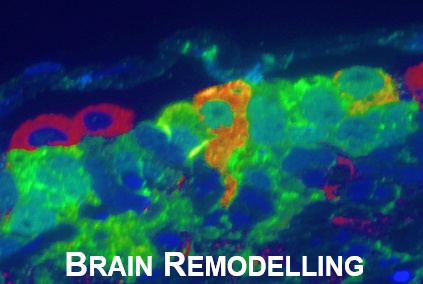
The role of neuro-epithelial-like and radial-glial stem and progenitor cells in development, plasticity, and repair
The role of neuro-epithelial-like and radial-glial stem and progenitor cells in development, plasticity, and repair
Benjamin W Lindsey, Zachary J. Hallb, Aurélie Heuzéc, Jean-Stéphane Jolyc, Vincent Tropepeb, Jan Kaslin
Once thought to be a structurally stable population of glia and neurons arising primarily during early development, the adult central nervous system (CNS) is now known to maintain the capacity to remodel throughout life. This occurs in part due to constitutive neurogenesis in neural micro-environments, commonly known as stem cell niches. Neurogenic plasticity within these niches is made possible by distinct classes of neural stem and progenitor cells (NSPCs), including radial-glial (RG), and neuro-epithelial-like (NE) cells, although the specific cellular composition of stem cell niches vary across brain divisions and vertebrate taxa (Lindsey and Tropepe, 2006; Kaslin et al., 2008, 2009; Lindsey et al., 2012; Grandel and Brand, 2013; Dambroise et al., 2017). For instance, NE cells are critical for building a rudimentary mammalian CNS during the earliest embryonic stages, but these cells typically acquire a RG phenotype later in development. In many regions of the CNS, these cells further transform into astrocytelike cells in adulthood (Götz and Huttner, 2005; Kriegstein and Alvarez-Buylla, 2009). Unlike mammals, teleost fishes, such as zebrafish and medaka, retain separate NE and RG cells with NSPC properties in a number of neurogenic zones from embryonic development into adulthood (Kaslin et al., 2009; Ito et al., 2010; Recher et al., 2013; Lindsey et al., 2014; Dambroise et al., 2017). The prevailing subtypes of NSPCs present in the mature CNS are a product of divergent developmental programs that, by adulthood, may confer different neurogenic and reparative potential. The heterogeneous nature of NSPCs can be considered at multiple levels, including their molecular signatures, cellular state (i.e. dormant, slow cycling, fast transit amplifying), their glionenic or neurogenic lineages, and finally the subtypes of glia and/or neurons they are capable of producing under physiological and pathophysiological conditions. The diversity of NSPC phenotypes across species, in addition to the heterogeneous nature of many stem cell niches themselves (Shen et al., 2006; Merkle et al., 2007; Lledo et al., 2008; Ganz et al., 2010; Marz et al., 2010), highlight the need to better comprehend these cells at the population level. Focusing at this level will undoubtedly elucidate the species- and niche-specific biological significance of NSPCs, along with their unique cellular and molecular profiles, and potential for tissue regeneration.
READ FULL PUBLICATION
Lindsey et al., 2018 (2.4 MB)




